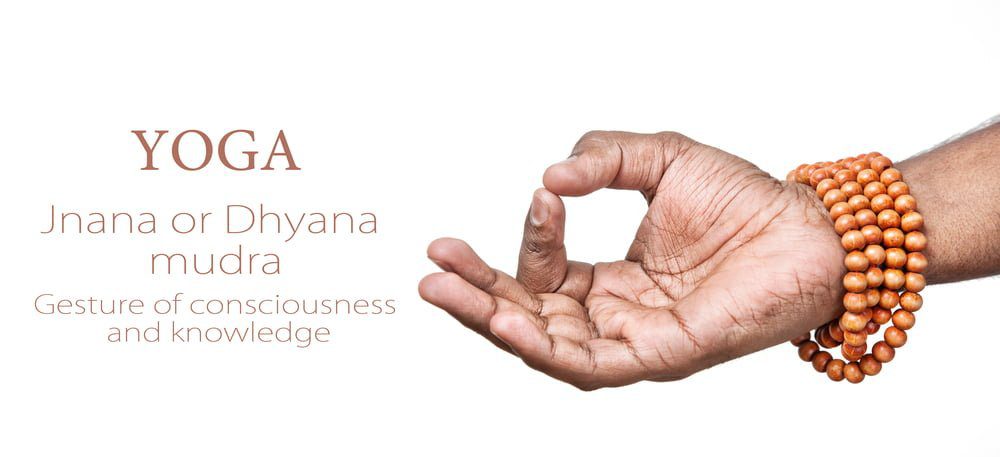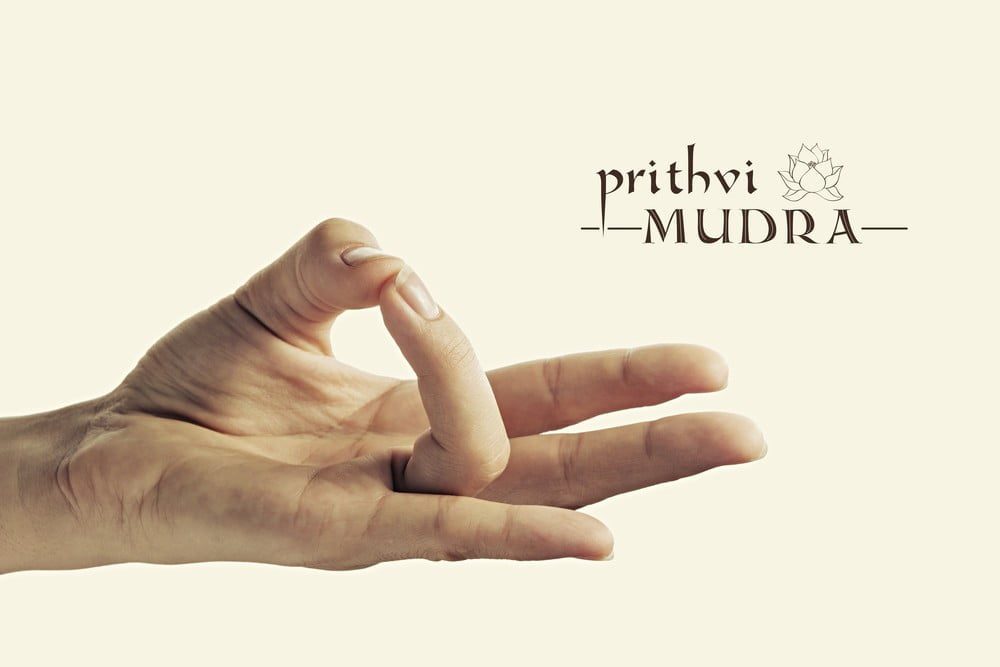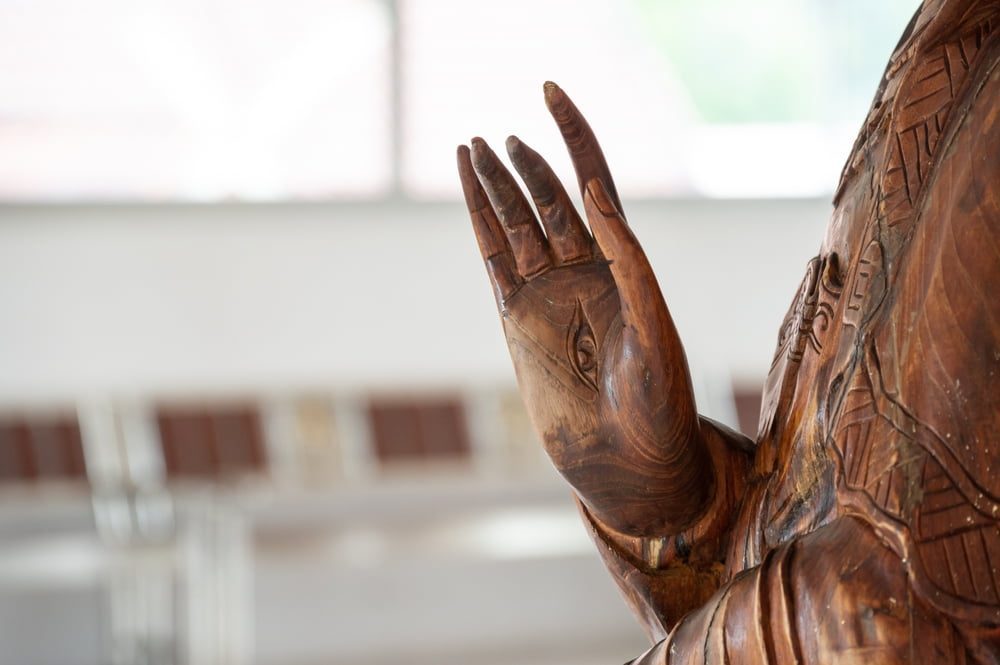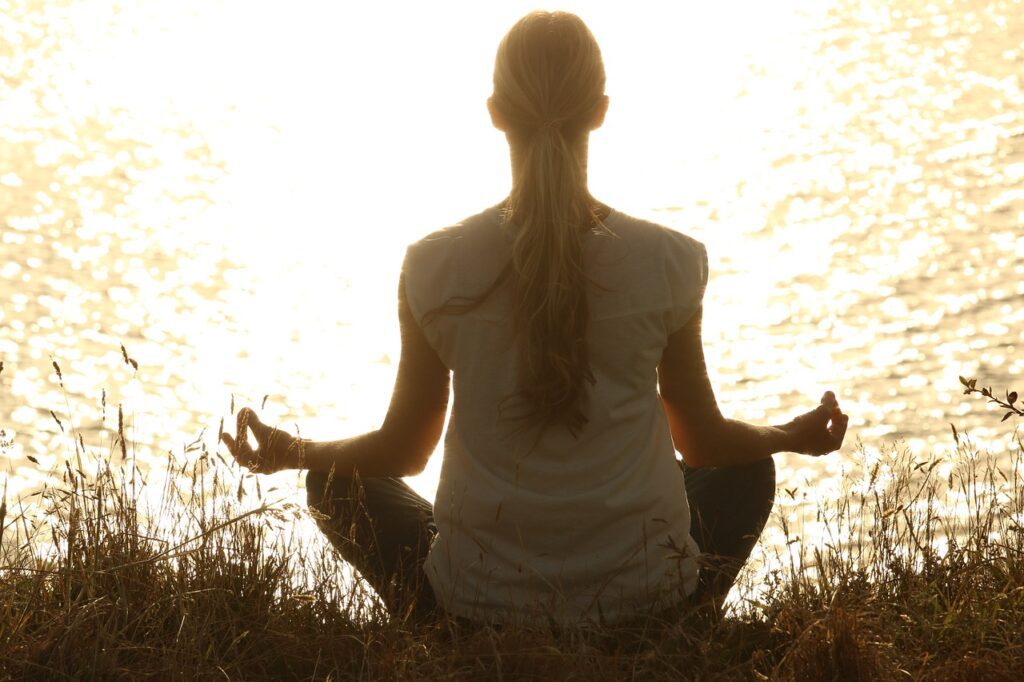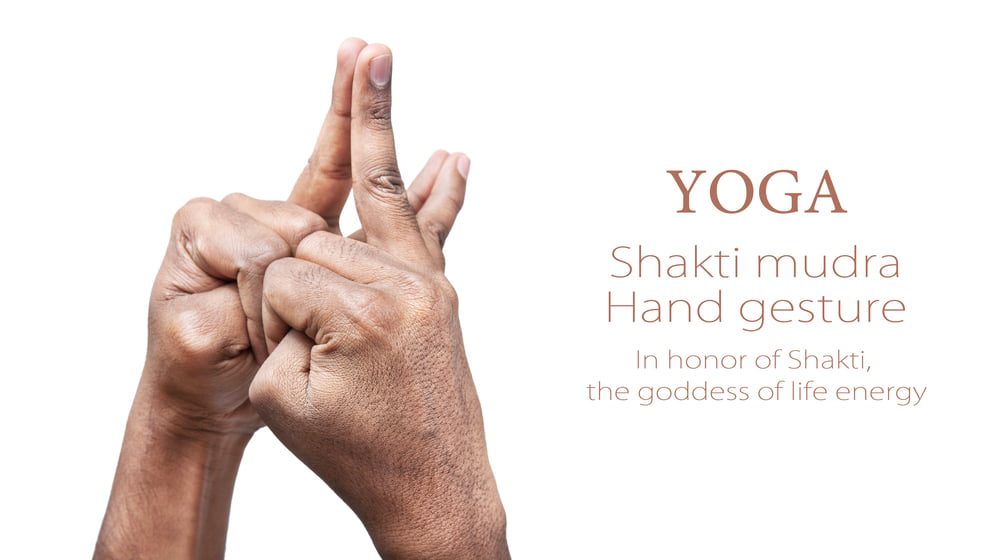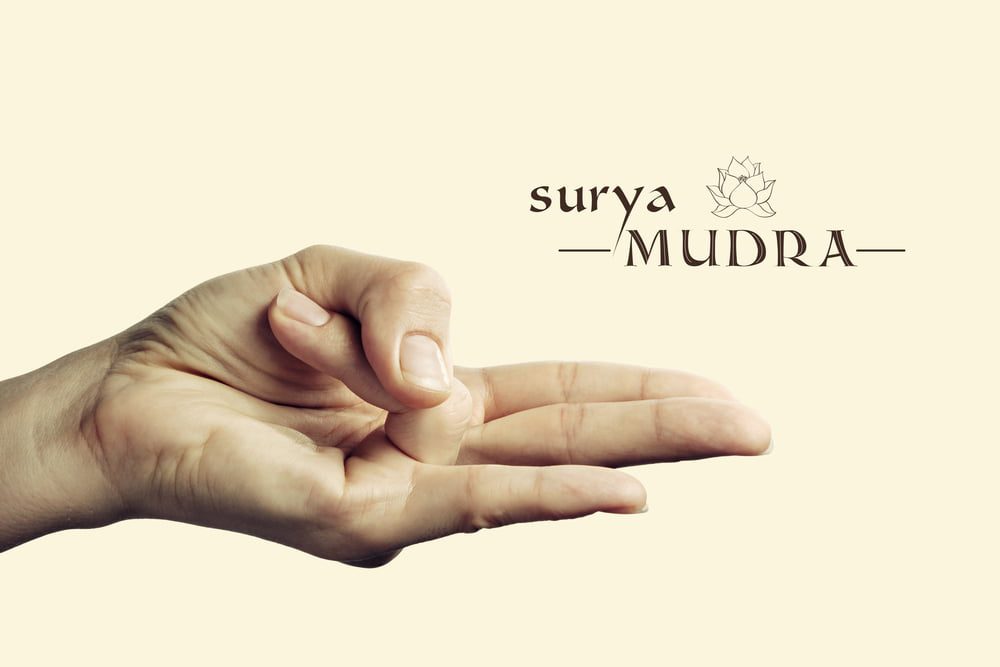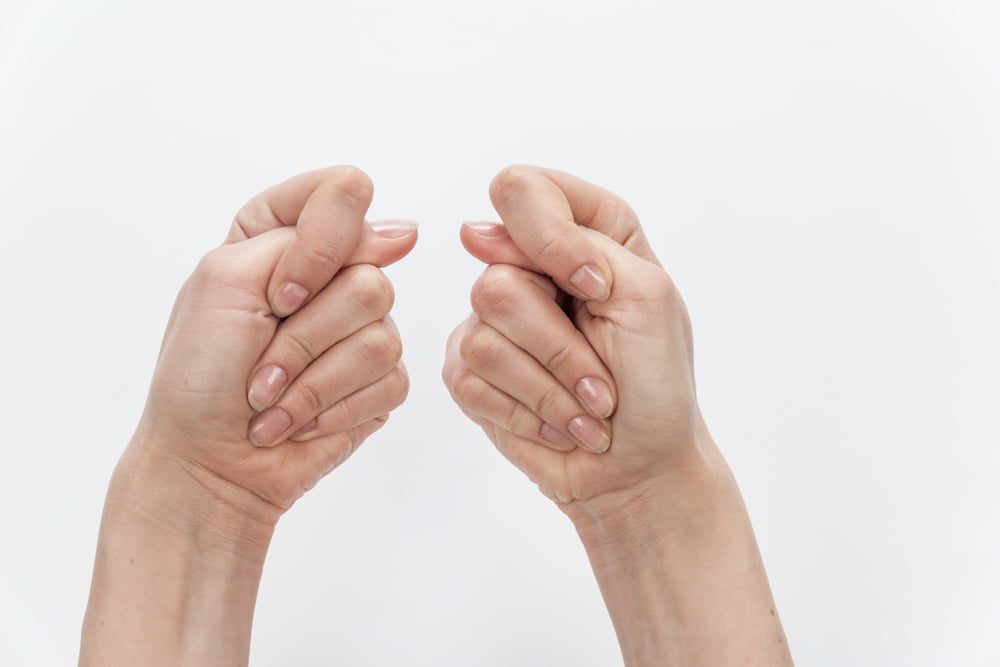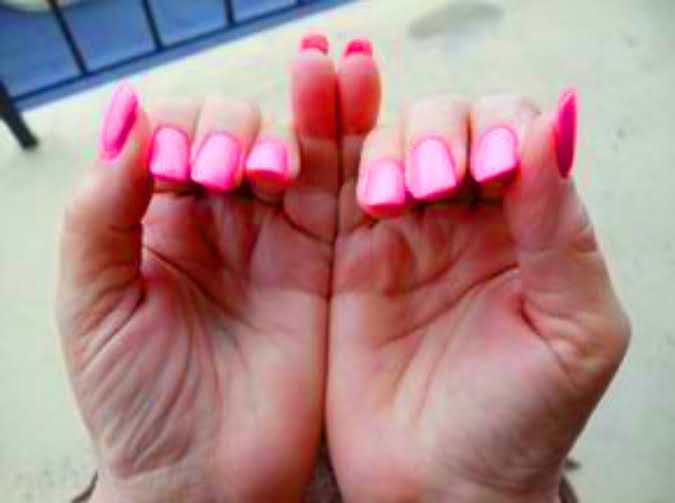Jnana Mudra which also known as the gesture of knowledge or wisdom, is a symbolic hand gesture used in yoga & meditation practices. This mudra is believed to enhance concentration, stimulate the brain & promote a state of calmness and clarity. It is commonly practiced alongside pranayama (breathing exercises) and meditation to deepen the experience and facilitate a stronger connection between mind and body. While Jnana Mudra offers numerous benefits, it is important to understand its proper execution, potential side effects & necessary precautions to ensure a safe and effective practice. In this article, we will delve into the benefits of Jnana Mudra, explore any potential side effects, provide a step-by-step guide on how to perform it correctly & highlight important precautions to take before incorporating this mudra into your practice.
What Is The Meaning of Jnana Mudra?
Jnana Mudra is a powerful hand gesture that holds deep significance in yoga and meditation practices. Derived from the Sanskrit word “jnana” meaning knowledge or wisdom, and “mudra” meaning seal or gesture, Jnana Mudra is believed to enhance concentration, promote mental clarity & facilitate the flow of spiritual energy.
Benefits of Jnana Mudra.
Jnana mudra holds numerous benefits for the practitioner both physically & mentally. Here are some of the key benefits of incorporating Jnana Mudra into your practice:
1. Enhances Focus & Concentration.
By joining the thumb & index finger in Jnana Mudra, it is believed to activate the root chakra, which is associated with grounding & stability. This helps to calm the mind & improve focus, allowing for better concentration during meditation & other activities requiring mental clarity.
2. Stimulates the Flow of Knowledge & Wisdom.
As the name suggests, Jnana Mudra is associated with the channeling of knowledge & wisdom. This mudra is believed to help stimulate the flow of information from the higher realms, allowing the practitioner to access deeper levels of understanding and insight.
3. Balances The Energy Within The Body.
Jnana Mudra is thought to harmonize the energy within the body, particularly the elements of air & ether. This balance helps to promote a sense of inner peace & tranquility, creating a conducive environment for spiritual growth and self discovery.
4. Calms the Mind & Reduces Anxiety.
The gentle pressure created by joining the thumb & index finger in Jnana Mudra has a soothing effect on the nervous system. This can help to calm an overactive mind, reduce anxiety & promote a state of relaxation and mental clarity.
5. Improves Memory & Cognitive Function.
Regular practice of Jnana Mudra is believed to enhance memory & cognitive function. The activation of specific energy channels associated with the fingers & hands helps to stimulate the brain, improving its capacity for retention, recall & overall mental functioning.
6. Cultivates a Sense of Inner Awareness.
Jnana Mudra encourages introspection & self reflection, allowing the practitioner to develop a deeper sense of self awareness. By turning the attention inward, this mudra helps to cultivate mindfulness and a better understanding of one’s thoughts, emotions & inner experiences.
7. Promotes Spiritual Growth & Self Realization.
Jnana Mudra is considered a powerful tool for spiritual growth & self realization. By connecting the thumb, representing the individual self, with the index finger, symbolizing universal consciousness, this mudra signifies the union of the individual with the divine.
Regular practice can deepen one’s spiritual journey and lead to a greater sense of interconnectedness and enlightenment.
| 💡 Tips Verywel Fit.com Incorporating Jnana Mudra into your yoga or meditation practice can bring forth these numerous benefits, allowing you to cultivate a deeper sense of wisdom, clarity & inner peace. |
Side Effects of Jnana Mudra.
While Jnana Mudra is generally considered safe for most individuals, it is essential to be aware of following potential side effects that may arise when practicing this mudra incorrectly or excessively:
1. Muscle Strain.
When performing Jnana Mudra, it is crucial to maintain a relaxed & comfortable position. However, if excessive force or tension is exerted on the fingers or hand, it may lead to muscle strain or discomfort.
It is important to listen to your body and adjust the mudra’s intensity accordingly to prevent any potential strain.
2. Joint Pain.
Incorrect alignment or excessive pressure on the fingers & joints while practicing Jnana Mudra can result in joint pain, especially if done for an extended period. It is essential to maintain a gentle & balanced grip without overexerting the joints, allowing for a comfortable experience.
3. Numbness or Tingling.
Extended periods of holding the Jnana Mudra, particularly if too much pressure is applied can lead to temporary numbness or tingling sensations in the fingers or hand.
This sensation is typically harmless & dissipates once the mudra is released. However, if these sensations persist or worsen, it is advisable to consult a healthcare professional.
4. Fatigue.
Practicing Jnana Mudra for an extended duration, especially without proper rest or breaks can lead to hand or arm fatigue. It is crucial to listen to your body & take breaks if needed to prevent excessive strain and fatigue.
5. Distraction.
While Jnana Mudra is intended to enhance focus & concentration, it is possible to become overly fixated on the mudra itself, leading to distraction from the intended meditation or yoga practice.
It is important to strike a balance & remember that the mudra is a tool to support your practice, rather than the sole focus.
6. Emotional Releases.
In some cases, practicing Jnana Mudra may trigger emotional releases or sensations. This can occur due to the mudra’s ability to stimulate energy flow & activate specific areas in the brain.
It is essential to approach these experiences with mindfulness and allow any emotions or sensations to arise and pass naturally.
| 💡 Tips Verywel Fit.com It is crucial to note that the side effects mentioned above are not common & often arise from incorrect or excessive practice. To ensure a safe and enjoyable experience, it is recommended to learn Jnana Mudra from a qualified yoga instructor or practitioner and practice with awareness, moderation and respect for your body’s limits. As with any new practice, it is advisable to consult a healthcare professional if you have any underlying medical conditions or concerns. |
How To Do Jnana Mudra?
To perform Jnana Mudra, follow these steps:
1. Find a Comfortable Seated Position.
Begin by finding a quiet & peaceful place where you can sit comfortably in a cross legged position or on a cushion. Ensure your spine is straight, shoulders relaxed & eyes gently closed.
2. Relax Your Hands.
Rest your hands on your thighs, palms facing up. Take a few deep breaths, allowing your body & mind to relax.
3. Touch the Tip of Your Index Finger & Thumb.
Gently touch the tip of your index finger to the tip of your thumb, creating a circular shape. The other three fingers should remain straight but relaxed.
4. Maintain a Relaxed Posture.
While maintaining the connection between your index finger & thumb, ensure your arms, neck & shoulders are relaxed. Avoid any tension or strain in your body.
5. Find a Comfortable Level of Pressure.
Experiment with the amount of pressure between your index finger & thumb. It should be firm enough to maintain the connection but not too tight that it causes discomfort.
6. Rest your Hands on Your Knees or Thighs.
You can either choose to keep your hands resting on your knees or thighs or alternatively, you may prefer to place your hands in your lap, with the palms facing up.
7. Engage In Deep Breathing and Meditation.
With Jnana Mudra formed, take deep, slow breaths, focusing on the flow of breath in and out of your body. As you breathe, allow your mind to settle, bringing your attention to the present moment.
8. Cultivate Inner Awareness.
As you continue to breathe deeply, turn your focus inward. Allow your thoughts to naturally arise and pass, without judgment or attachment. Embrace a sense of inner stillness & observe the sensations in your body & mind.
9. Practice Jnana Mudra Regularly.
To experience the full benefits of Jnana Mudra, it is recommended to incorporate it into your daily meditation or yoga practice. Consistency & regularity will help to deepen your connection to inner wisdom & knowledge.
| 💡 Tips Verywel Fit.com Remember, Jnana Mudra is not only a physical gesture but also a symbolic representation of the union between individual consciousness & universal wisdom. By practicing this mudra with intention and mindfulness, you can tap into your innate wisdom, expand your knowledge & embark on a transformative journey of self discovery. |
Precautions During Jnana Mudra.
It is generally safe & beneficial to practice Jnana Mudra. However it is important to take certain precautions to ensure an optimal experience. Here are some precautions to keep in mind during the practice of Jnana Mudra:
1. Physical Comfort.
Before initiating Jnana Mudra it is essential to find a comfortable seated or lying position. Ensure that your body is properly aligned, with your spine straight & relaxed. This will help you to maintain a steady & focused posture without causing any strain or discomfort.
2. Warm up Exercises.
To prevent any unnecessary strain or injury, it is recommended to perform some warm up exercises for your hands, wrists & fingers before starting Jnana Mudra. Gentle stretching & rotation exercises can help to loosen up the muscles & joints, preparing them for the gesture.
3. Gradual Progression.
If you are new to Jnana Mudra or have limited flexibility in your fingers, it is advisable to start with a modified version of the gesture. Begin by gently bringing the tips of your thumb & index finger together, gradually increasing the duration & intensity of the mudra as your flexibility improves over time.
4. Awareness of Body Signals.
While practicing Jnana Mudra, pay close attention to any sensations or discomfort in your hand, wrist or fingers. If you experience any pain, numbness or tingling, release the mudra immediately & consult with a healthcare professional if necessary. Each individual’s body is unique, so it is important to listen & respond to its signals accordingly.
5. Moderation.
Like any other practice, it is essential to maintain a balanced approach when practicing Jnana Mudra. Avoid excessive or prolonged periods of holding the mudra, especially if you are a beginner. Start with shorter durations & gradually increase the time as you become more comfortable and experienced with the gesture.
6. Personal Limitations.
It is crucial to respect your body’s limitations & avoid forcing or straining during Jnana Mudra. If you have any pre existing hand or wrist injuries, arthritis or other medical conditions that may be aggravated by the mudra, it is advisable to seek guidance from a qualified teacher or healthcare professional before engaging in the practice.
7. Hygiene.
As with any hand gesture or practice involving physical contact, it is important to maintain proper hygiene. Ensure that your hands are clean before initiating Jnana Mudra to prevent the spread of germs and maintain a hygienic practice environment.
| 💡 Tips Verywel Fit.com By following these precautions, you can enhance the safety & effectiveness of your Jnana Mudra practice which allowing you to experience the profound benefits of this symbolic gesture while maintaining the wellbeing of your body & mind. Remember to approach the practice with patience, mindfulness, and respect for yourself and your body’s unique requirements. |
My Personal Experience on Jnana Mudra.
Personally, I have found this mudra to be incredibly grounding & calming. Whenever I feel overwhelmed or in need of clarity, I bring my thumb & index finger together in this gesture.
I have noticed that by practicing Jnana Mudra, my mind becomes more focused and my thoughts become still.
It helps me tune into my inner wisdom and intuition, making it easier to make decisions and navigate through life’s challenges.
Overall, Jnana Mudra has become an essential tool in my spiritual journey, allowing me to connect with myself on a deeper level and find peace within.
Frequently Asked Questions.
Yes, anyone can practice Jnana Mudra. It is a simple & safe hand gesture that can be done by people of all ages and physical abilities. However, it is always advisable to consult a yoga teacher or practitioner if you have any specific health concerns or conditions.
Jnana Mudra can be practiced at any time, but it is often used during meditation, pranayama (breathing exercises) or during yoga asanas (postures) to enhance the spiritual experience and concentration. You can also practice it during moments of stress or when you want to promote mental clarity.
Yes, there are variations of Jnana Mudra. One variation is Chin Mudra, where the thumb and index finger touch with the other three fingers relaxed or slightly bent. Another variation is Shuni Mudra, where the thumb and middle finger touch while the other fingers are extended.
There is no specific time duration to hold Jnana Mudra. You can hold it for a few minutes or as long as you feel comfortable during your meditation or yoga practice. It is more important to focus on the intention and awareness while practicing the gesture.
5. Can Jnana Mudra be combined with other mudras?
Yes, Jnana Mudra can be combined with other mudras to enhance their effects. For example, you can combine Jnana Mudra with Chin Mudra or Prana Mudra to deepen the meditation or energy flow.
While Jnana Mudra is commonly practiced during seated meditation or yoga, it can also be practiced while walking or doing other activities that allow you to maintain the gesture without compromising your safety or focus. However, it is important to practice mindfulness and adapt the hand gesture according to the specific activity.
Bottom Line.
Jnana Mudra is a powerful hand gesture that holds deep significance in Hindu and Buddhist spiritual practices. It symbolizes knowledge, wisdom & connection to the higher self. By bringing the thumb and index finger together, individuals can tap into their inner wisdom & enhance their focus and concentration. Jnana Mudra is not only a physical gesture but also a metaphorical representation of the unity between the individual and the divine. By incorporating this mudra into meditation or yoga practices, individuals can cultivate a sense of inner calmness, clarity & spiritual growth.

 Workout
Workout
 Meditation
Meditation





 Contact Us
Contact Us
